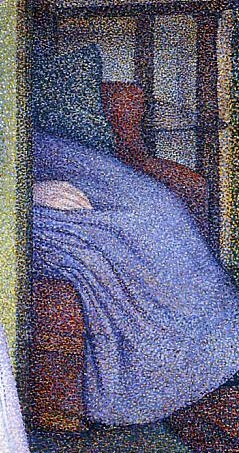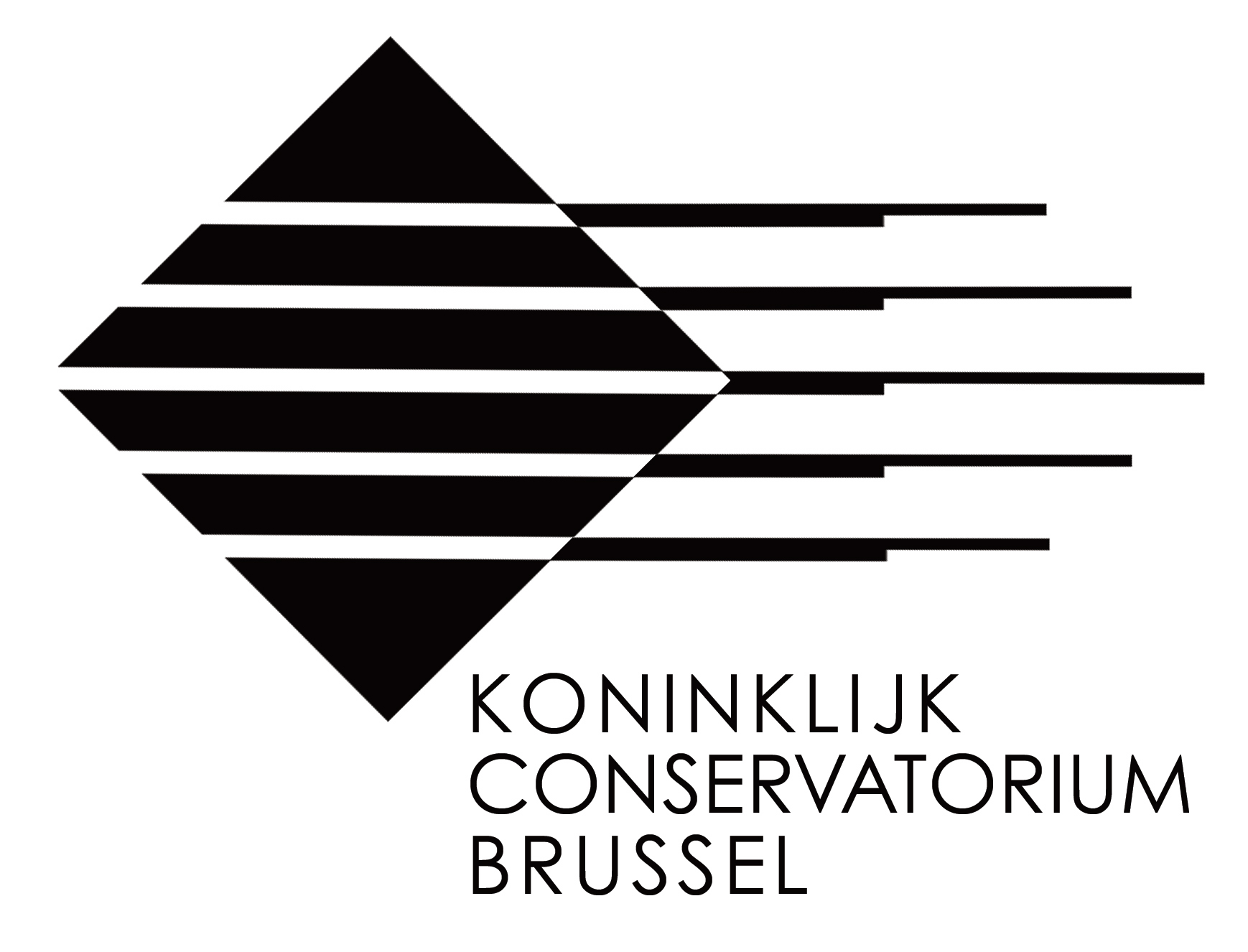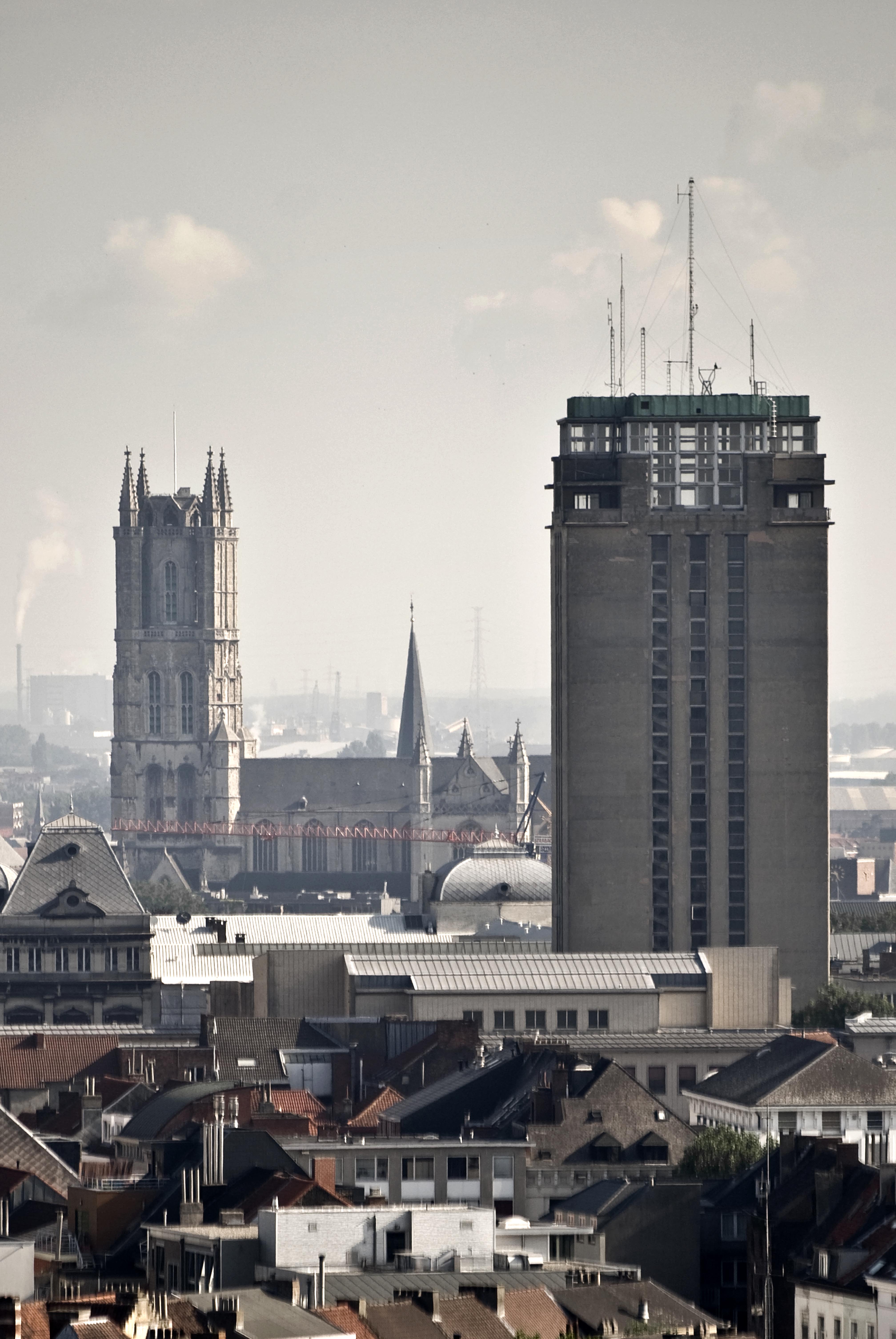|
Portrait Of Irma Sèthe
''Portrait of Irma Sèthe'' is an oil on canvas painting by the Belgian neo-impressionist painter Théo van Rysselberghe. The work is a portrait, painted in pointillist style, of Irma Sèthe, one of the heiress of a musical Brussels family close to the painter, playing the violin. The work is now in the private collection of the ''Musée du Petit Palais'' in Geneva. Context In 1884 Van Rysselberghe was one of the founders of the ''avant-garde'' society of ''Les XX''. Members of the group initially focused on Impressionism, but under the influence of Georges Seurat and Paul Signac, several of its members moved on, with many of them embracing Seurat's Pointillism. While Van Rysselberghe was not the first member of ''Les XX'' to produce work based on the guidelines set by Seurat, he nevertheless ended up with being to most committed to the latter, sticking with divisionism for the rest of his career. Today, Van Rysselberghe is considered one of the greatest Neo-Impressionists of th ... [...More Info...] [...Related Items...] OR: [Wikipedia] [Google] [Baidu] |
Théo Van Rysselberghe
Théophile "Théo" van Rysselberghe (23 November 1862 – 13 December 1926) was a Belgian neo-impressionist painter, who played a pivotal role in the European art scene at the turn of the twentieth century. Biography Early years Born in Ghent to a French-speaking bourgeois family, he studied first at the Academy of Ghent under Theo Canneel and from 1879 at the Académie Royale des Beaux-Arts in Brussels under the directorship of Jean-François Portaels. The North African paintings of Portaels had started an orientalist fashion in Belgium. Their impact would strongly influence the young Théo van Rysselberghe. Between 1882 and 1888 he made three trips to Morocco, staying there in total a year and a half. Age only eighteen, he had already participated at the Salon of Ghent, showing two portraits. Soon afterwards followed his ''Self-portrait with pipe'' (1880), painted in somber colours in the Belgian realistic tradition of the times. His ''Child in an open spot of the for ... [...More Info...] [...Related Items...] OR: [Wikipedia] [Google] [Baidu] |
Divisionism
Divisionism, also called chromoluminarism, was the characteristic style in Neo-Impressionist painting defined by the separation of colors into individual dots or patches which interacted optically..Homer, William I. ''Seurat and the Science of Painting.'' Cambridge, MA: The MIT Press, 1964. By requiring the viewer to combine the colors optically instead of physically mixing pigments, Divisionists believed they were achieving the maximum luminosity scientifically possible. Georges Seurat founded the style around 1884 as chromoluminarism, drawing from his understanding of the scientific theories of Michel Eugène Chevreul, Ogden Rood and Charles Blanc, among others. Divisionism developed along with another style, Pointillism, which is defined specifically by the use of dots of paint and does not necessarily focus on the separation of colors.Ratliff, Floyd. ''Paul Signac and Color in Neo-Impressionism.'' New York: Rockefeller UP, 1992. . Theoretical foundations and development ... [...More Info...] [...Related Items...] OR: [Wikipedia] [Google] [Baidu] |
Paintings By Théo Van Rysselberghe
Painting is the practice of applying paint, pigment, color or other medium to a solid surface (called the "matrix" or "support"). The medium is commonly applied to the base with a brush, but other implements, such as knives, sponges, and airbrushes, can be used. In art, the term ''painting ''describes both the act and the result of the action (the final work is called "a painting"). The support for paintings includes such surfaces as walls, paper, canvas, wood, glass, lacquer, pottery, leaf, copper and concrete, and the painting may incorporate multiple other materials, including sand, clay, paper, plaster, gold leaf, and even whole objects. Painting is an important form in the visual arts, bringing in elements such as drawing, composition, gesture (as in gestural painting), narration (as in narrative art), and abstraction (as in abstract art). Paintings can be naturalistic and representational (as in still life and landscape painting), photographic, abstract, narrative, s ... [...More Info...] [...Related Items...] OR: [Wikipedia] [Google] [Baidu] |
1894 Paintings
Events January–March * January 4 – A military alliance is established between the French Third Republic and the Russian Empire. * January 7 – William Kennedy Dickson receives a patent for motion picture film in the United States. * January 9 – New England Telephone and Telegraph installs the first battery-operated telephone switchboard, in Lexington, Massachusetts. * February 12 ** French anarchist Émile Henry sets off a bomb in a Paris café, killing one person and wounding twenty. ** The barque ''Elisabeth Rickmers'' of Bremerhaven is wrecked at Haurvig, Denmark, but all crew and passengers are saved. * February 15 ** In Korea, peasant unrest erupts in the Donghak Peasant Revolution, a massive revolt of followers of the Donghak movement. Both China and Japan send military forces, claiming to come to the ruling Joseon dynasty government's aid. ** At 04:51 GMT, French anarchist Martial Bourdin dies of an accidental detonation of his own bom ... [...More Info...] [...Related Items...] OR: [Wikipedia] [Google] [Baidu] |
Fauvism
Fauvism /ˈfoʊvɪzm̩/ is the style of ''les Fauves'' (French language, French for "the wild beasts"), a group of early 20th-century modern artists whose works emphasized painterly qualities and strong colour over the Representation (arts), representational or Realism (visual arts), realistic values retained by Impressionism. While Fauvism as a style began around 1904 and continued beyond 1910, the movement as such lasted only a few years, 1905–1908, and had three exhibitions.John Elderfield, The ''"Wild Beasts" Fauvism and Its Affinities,'' 1976, Museum of Modern Art, p.13, The leaders of the movement were André Derain, Maurice de Vlaminck, and Henri Matisse. Artists and style Besides Matisse and Derain, other artists included Robert Deborne, Albert Marquet, Charles Camoin, Louis Valtat, Jean Puy, Maurice de Vlaminck, Henri Manguin, Raoul Dufy, Othon Friesz, Georges Rouault, Jean Metzinger, Kees van Dongen and Georges Braque (subsequently Picasso's partner in Cubism). Th ... [...More Info...] [...Related Items...] OR: [Wikipedia] [Google] [Baidu] |
Vienna Secession
The Vienna Secession (german: Wiener Secession; also known as ''the Union of Austrian Artists'', or ''Vereinigung Bildender Künstler Österreichs'') is an art movement, closely related to Art Nouveau, that was formed in 1897 by a group of Austrian painters, graphic artists, sculptors and architects, including Josef Hoffman, Koloman Moser, Otto Wagner and Gustav Klimt. They resigned from the Association of Austrian Artists in protest against its support for more traditional artistic styles. Their most influential architectural work was the Secession Building designed by Joseph Maria Olbrich as a venue for expositions of the group. Their official magazine was called '' Ver Sacrum'' (''Sacred Spring'', in Latin), which published highly stylised and influential works of graphic art. In 1905 the group itself split, when some of the most prominent members, including Klimt, Wagner, and Hoffmann, resigned in a dispute over priorities, but it continued to function, and still functions ... [...More Info...] [...Related Items...] OR: [Wikipedia] [Google] [Baidu] |
Pointillism
Pointillism (, ) is a technique of painting in which small, distinct dots of color are applied in patterns to form an image. Georges Seurat and Paul Signac developed the technique in 1886, branching from Impressionism. The term "Pointillism" was coined by art critics in the late 1880s to ridicule the works of these artists, but is now used without its earlier pejorative connotation. The movement Seurat began with this technique is known as Neo-impressionism. The Divisionism, Divisionists used a similar technique of patterns to form images, though with larger cube-like brushstrokes. Technique The technique relies on the ability of the eye and mind of the viewer to blend the color spots into a fuller range of tones. It is related to Divisionism, a more technical variant of the method. Divisionism is concerned with color theory, whereas pointillism is more focused on the specific style of brushwork used to apply the paint. It is a technique with few serious practitioners today an ... [...More Info...] [...Related Items...] OR: [Wikipedia] [Google] [Baidu] |
Royal Conservatory Of Brussels
The Royal Conservatory of Brussels (french: Conservatoire royal de Bruxelles, nl, Koninklijk Conservatorium Brussel) is a historic conservatory in Brussels, Belgium. Starting its activities in 1813, it received its official name in 1832. Providing performing music and drama courses, the institution became renowned partly because of the international reputation of its successive directors such as François-Joseph Fétis, François-Auguste Gevaert, Edgar Tinel, Joseph Jongen or Marcel Poot, but more because it has been attended by many of the top musicians, actors and artists in Belgium such as Arthur Grumiaux, José van Dam, José Van Dam, Sigiswald Kuijken, Josse De Pauw, Luk van Mello and Luk De Konink. Adolphe Sax, inventor of the saxophone, also studied at the Brussels Conservatory. In 1967, the institution split into two separate entities: the , which teaches in Dutch language, Dutch, and the , which continued teaching in French language, French. While the French-speaking en ... [...More Info...] [...Related Items...] OR: [Wikipedia] [Google] [Baidu] |
Eugène Ysaÿe
Eugène-Auguste Ysaÿe (; 16 July 185812 May 1931) was a Belgian virtuoso violinist, composer, and conductor. He was regarded as "The King of the Violin", or, as Nathan Milstein put it, the "tsar". Legend of the Ysaÿe violin Eugène Ysaÿe came from a background of "artisans", though a large part of his family played instruments. As violinist Arnold Steinhardt recounts, a legend was passed down through the Ysaÿe family about the first violin brought to the lineage: It was told of a boy whom some woodcutters found in the forest and brought to the village. The boy grew up to be a blacksmith. Once, at a village festival, he astonished everyone by playing the viol beautifully. From then on the villagers took pleasure in dancing and singing to the strains of his viol. One day an illustrious stranger stopped in front of the smithy to have his horse shod. The count's servant saw the viol inside and told the young smith that he had heard a new Italian instrument played by some m ... [...More Info...] [...Related Items...] OR: [Wikipedia] [Google] [Baidu] |
Harmonium
The pump organ is a type of free-reed organ that generates sound as air flows past a vibrating piece of thin metal in a frame. The piece of metal is called a reed. Specific types of pump organ include the reed organ, harmonium, and melodeon. The idea for the free reed was imported from China through Russia after 1750, and the first Western free-reed instrument was made in 1780 in Denmark. More portable than pipe organs, free-reed organs were widely used in smaller churches and in private homes in the 19th century, but their volume and tonal range were limited. They generally had one or sometimes two manuals, with pedal-boards being rare. The finer pump organs had a wider range of tones, and the cabinets of those intended for churches and affluent homes were often excellent pieces of furniture. Several million free-reed organs and melodeons were made in the US and Canada between the 1850s and the 1920s, some of which were exported. The Cable Company, Estey Organ, and Mason & ... [...More Info...] [...Related Items...] OR: [Wikipedia] [Google] [Baidu] |
Paul Dubois (sculptor)
Paul Dubois (18 July 1829 – 23 May 1905) was a French sculptor and painter from Nogent-sur-Seine. His works were mainly sculptures and statues, and he was also a portrait painter. Early life Paul Dubois was born on the 18 July 1829 in Nogent-sur-Seine, France. He began studying law to please his father who practiced as a notary, but gave this up in order to train as a sculptor; his enthusiasm for this possibly fanned by the admiration he had for the work of his great-uncle Jean-Baptiste Pigalle. When making his debut at the Paris Salon in 1857 he did so under the name Dubois-Pigalle. Career In 1858 he entered the atelier of Armand Toussaint at the École Nationale des Beaux-Arts. The following year he travelled to Rome, studying and copying the many great sculptures and mixed with the likes of Henri Chapu, Alexandre Falguière and Georges Bizet. As an artist he did not have to struggle with financial problems as his family supported all his studies. He stayed in Rome for 4 ye ... [...More Info...] [...Related Items...] OR: [Wikipedia] [Google] [Baidu] |
Henry Van De Velde
Henry Clemens van de Velde (; 3 April 1863 – 15 October 1957) was a Belgian painter, architect, interior designer, and art theorist. Together with Victor Horta and Paul Hankar, he is considered one of the founders of Art Nouveau in Belgium.'''' He worked in Paris with Samuel Bing, the founder of the first gallery of Art Nouveau in Paris. Van de Velde spent the most important part of his career in Germany and became a major figure in the German Jugendstil. He had a decisive influence on German architecture and design at the beginning of the 20th century. Early life Van de Velde was born in Antwerp, where he studied painting under Charles Verlat at the famous Royal Academy of Fine Arts, Antwerp. He then went on to study with the painter Carolus-Duran in Paris. As a young painter he was strongly influenced by Paul Signac and Georges Seurat and soon adopted a neo-impressionist style, and pointillism. In 1889 he became a member of the Brussels-based artist group "Les XX". After ... [...More Info...] [...Related Items...] OR: [Wikipedia] [Google] [Baidu] |











